When to reckon with halos
Halos are caused by refraction and reflection of 1ight in ice crystals. One could think that ice crystals are in the atmosphere only in winter. That is not at all like this. Temperatures in altitudes between 7 and 12 km are far below -20°C during all seasons.
So ice crystals can also form on hot summer days. The high clouds that mainly consist of ice crystals are classified into 3 types. These are cirrus, cirrostratus and cirrocumulus. When you see these types of clouds in the sky, you can always reckon with the appearing of halos.
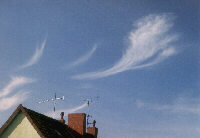 Cirrus
Cirrus
These clouds look filaceous. They are often scattered irregularly over the sky.
 Cirrostratus
Cirrostratus
Cirrostratus is a transparent white veil of clouds. It is often monotonous and covers a great part of the sky.
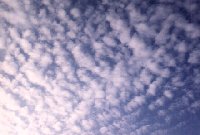 Cirrocumulus
Cirrocumulus
These are little white balls or spots of clouds which usually are arranged in lines. They can be distinguished from altocumulus by their smaller visible diameter. Halos are not as frequent in them as they are in cirrus or cirrostratus..
These three types of clouds cause most of the halos. But there are other situations when halos can be observed.
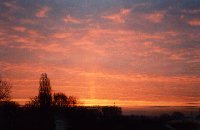 Altocumulus
Altocumulus
Altocumulus clouds are medium level clouds. Just a small part of them consists of ice crystals. Up to now, mainly sun pillars have been observed in altocumulus clouds.
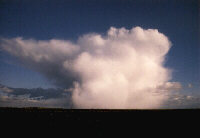 Cumulonimbus
Cumulonimbus
These are vertical clouds which reach very high levels. The upper part, that is shaped like an anvil, consists of ice crystals. There halos are sometimes visible.
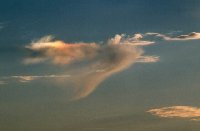 Virgae
Virgae
Virgae (here from cirrocumulus) can generate very beautiful halos. They also appear in other types of clouds, for example stratocumulus. Well-defined virgae look as if the clouds had "beards". But sometimes virgae are so thin that one cannot see them. Elliptical rings have been observed exclusively in virgae up to now.
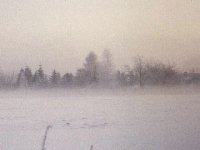 Freezing frost (diamont dust)
Freezing frost (diamont dust)
When temperatures are low in winter, freezing fog can form. Freezing fog causes the most beautiful halo displays by far.
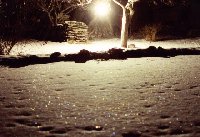 Blanket of snow
Blanket of snow
At low sun elevations you can even find halos an a blanket of snow. Here a part of the 22 -halo is visible.
© AKM e.V.
 Cirrus
Cirrus
 Cirrostratus
Cirrostratus
 Cirrocumulus
Cirrocumulus
 Altocumulus
Altocumulus
 Cumulonimbus
Cumulonimbus
 Virgae
Virgae
 Freezing frost (diamont dust)
Freezing frost (diamont dust)
 Blanket of snow
Blanket of snow